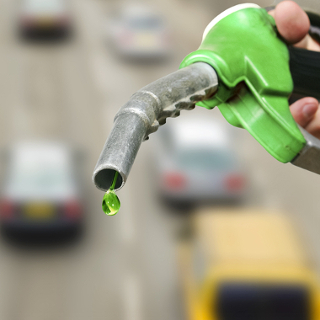Gasoline is obtained through the refinement It's from oil cracking, being composed of a mixture of hydrocarbons with five to ten carbon atoms in the chain. Thus, the quality of gasoline varies according to the hydrocarbons that make it up.
As explained in the text Combustion Engine Operation, this gasoline-powered engine runs on a four-stroke scheme that involves compressing the mixture of gasoline and air. The more the gasoline withstands this compression without suffering an explosion, the better its quality. But if the gasoline is very sensitive to compression, suffering premature explosions before the piston reaches neutral and before the spark releases from the spark plug, the result will be deregulation of the engine, the piston will be pushed with less force in the fourth stroke and the power of the car will decrease. When this occurs, there is a noise in the engine known as "hit pin" (knocking).
Therefore, a scale to measure the quality of gasoline, which is called octane index.
Among the hydrocarbons that make up gasoline, the one with the best octane rating or the best compressive strength is the
isoctane (2,2,4-trimethylpentane). This compound was assigned the value 100 octane or 100 octane. On the other hand, the heptane is the component of gasoline that is least resistant to compression and was given the value of zero octane or octane index equal to 0.This means that, if gasoline has an octage index equal to 87%, it behaves as if it were a mixture of 87% isoctane and 13% heptane.
To improve the compressive strength and, consequently, the octane index of gasoline, some additives can be added, which are called antiknocks. The antiknock most used by Petrobras is the methyl-t-butyl-ether (MTBE), which is added in up to 7% by volume.
In Brazil, octane rating is expressed in Anti-Knock Index (IAD), and regular gasoline is also specified by MON (Engine Octane Number) or Engine method - ASTM D270, which evaluates the resistance of gasoline to detonation when the engine is at full load and at high speed.
Also, according to National Agency for Petroleum, Natural Gas and Biofuels (ANP), Brazilian legislation established, through the publication of the Ordinance No. 143 of the Ministry of Agriculture, Livestock and Supply, which all types of gasoline must be added with anhydrous ethanol with a percentage of 25%. THE margin of error is 1% plus or minus. This is done because ethanol evaporates more easily and works as an antiknock, increasing the octane rating of gasoline. Furthermore, at this percentage, the addition of ethanol to gasoline helps to reduce pollutants, such as carbon monoxide (one of the greenhouse gases), and also improves the internal cleanliness of the engine.
Do not stop now... There's more after the advertising ;)
The addition of alcohol to gasoline generates a type of gasoline classification in A and C:
* Gasoline A: it is produced in refineries or petrochemicals and does not contain ethanol. Its density, in general, varies from 700 to 770 g/L;
* Gasoline C: is the one sold at service stations and received addition of ethanol by distributors. Its density, in general, ranges from 718 to 775 g/L.
According to the components and quality, the gasoline classification according to the ANP, is done as follows:
1- Common Gasoline: It has a yellowish color, an octane index equal to 87, has no additives and its maximum sulfur content is 50 ppm (S-50 gasoline).

The color of the original gasoline varies from colorless to yellowish depending on the chemical composition and the various refining processes. Only podium gasoline is colorless
2- Additive Gasoline: is the same as regular gasoline (same octagen index and same sulfur content), however, as the name implies, Additivated gasoline has detergent and dispersant additives that promote cleaning of the fuel system and nozzles injectors. To differentiate it from regular gasoline, it receives the addition of a colorant of the desired color. Petrobras adds the green dye.

Petrobras' additive gasoline receives the addition of green dye
3- Premium Gasoline: it has the same detergent and dispersant additives as gasoline with additives, but its octane index is higher, being equal to 91. In addition, its sulfur content is lower, being less polluting.
4- Podium Petrol: gasoline sold exclusively by Petrobras, it has greater performance because it has an octane index equal to 95, in addition to detergent/dispersant additives and low sulfur content. It is originally colorless, but is marketed with a slightly orange color because of the dye added to the anhydrous ethanol that is added to it. This is the most stable gasoline that exists today in the Brazilian market, and it can be stored longer than the others.
The only colorant colors that cannot be used in automotive gasoline are pink and blue. Pink is not used because, in the 1980s, when ethanol production was small in Brazil, methanol was imported from the United States to that it was used as a gasoline additive, forming the MEG (methanol-ethanol-gasoline) mixture, which received a pink dye to be differentiated. The drawback of its use is that methanol corrodes steel and is very toxic. In addition, its flame is invisible to the naked eye, which makes it difficult to control fires and accidents. Therefore, today it is not used in any type of gasoline in Brazil.
The blue color is used in aviation gasoline.
By Jennifer Fogaça
Graduated in Chemistry

